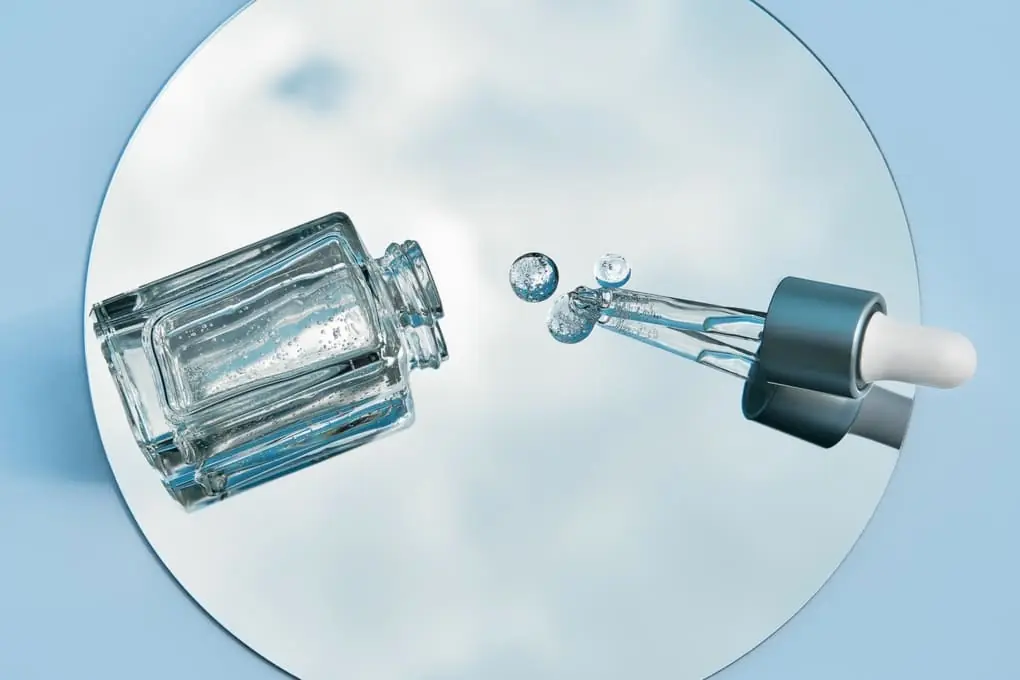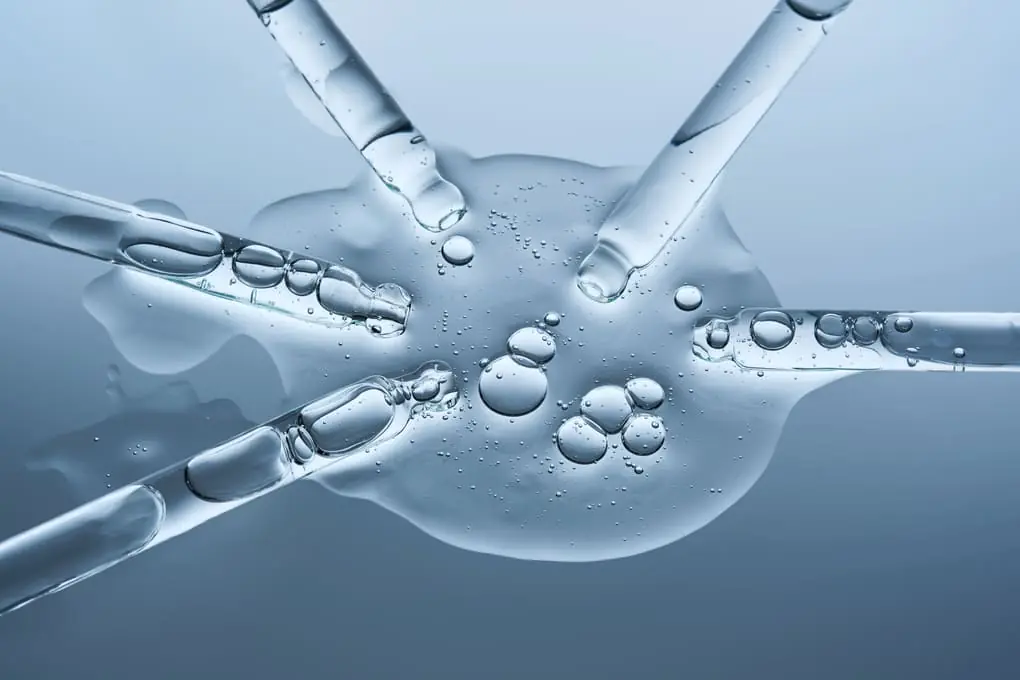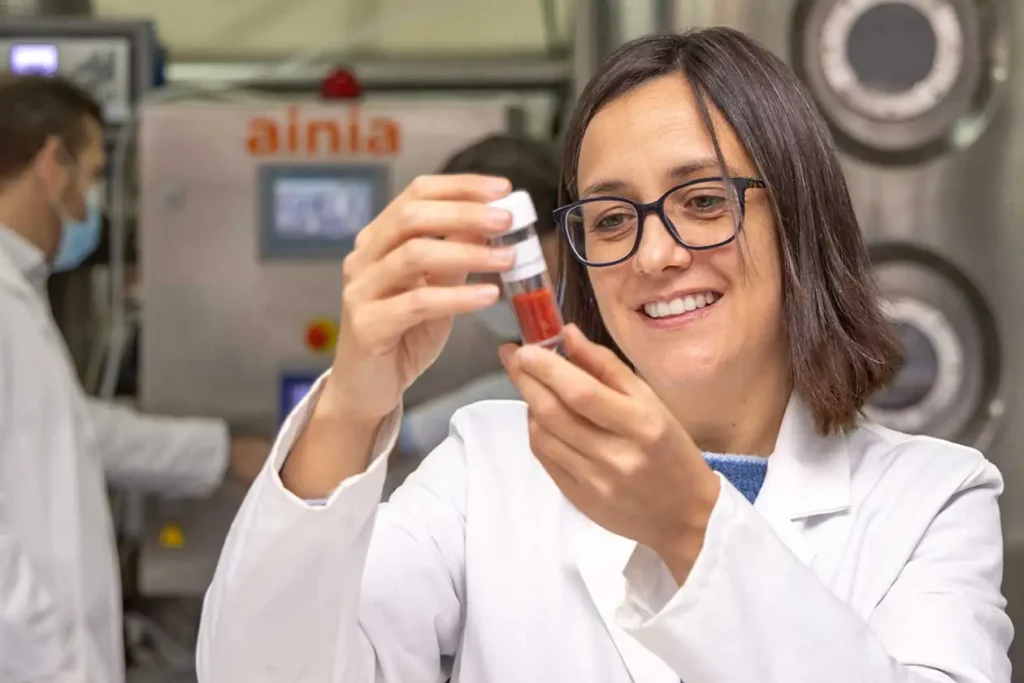Innovation in the cosmetics industry never stops. New ingredients, more advanced technologies, and increasingly personalised formulations are shaping the way forward. In this context, nanotechnology stands out as one of the most promising tools for developing cosmetic products that are effective, safe, and sustainable.
Within this field, nanoencapsulation emerges as one of the most disruptive applications, enabling greater efficacy of active ingredients while enhancing the user experience.
Nanotechnology Definition
Nanotechnology is a branch of science and engineering that studies and manipulates matter at the nanometric scale, that is, dimensions ranging from 1 to 100 nanometres. To put it into perspective, one nanometre is equal to one millionth of a millimetre, a scale so small that it is invisible to the human eye.
What is most fascinating about this technology is that when materials are reduced to the nanoscale, their physical, chemical, and biological properties can change. This is largely due to the increase in active surface area and the quantum phenomena that occur at such tiny dimensions. As a result, the same material can behave very differently at the macro scale compared to the nanoscale.
Nanotechnology combines knowledge from various disciplines such as chemistry, physics, biology, and engineering, making it a cross-disciplinary field with multiple applications in medicine, food, energy, and environmental science.
In the cosmetic sector, nanotechnology has opened new possibilities for creating more effective and personalised products. Its ability to improve skin penetration, protect sensitive active ingredients, and offer controlled release has made it possible to develop treatments that act with greater precision and efficacy while ensuring safety and improving consumer experience.
Additionally, this technology makes it possible to design formulas with lighter textures, better absorption, and increased stability, transforming the way cosmetic products are perceived and experienced.
Applications and Examples of Nanotechnology
Today, there are multiple examples of nanotechnology applied to cosmetics. Some of the most prominent include:
- Nanoemulsions: ultrafine systems that allow for better absorption of liposoluble actives such as essential oils or vitamins.
- Liposomes: spherical structures capable of encapsulating active ingredients to improve their penetration into the skin.
- Metal nanoparticles: used in sunscreens to provide more effective UV protection without leaving visible residues on the skin.
- Nanocapsules and controlled-release systems: one of the most significant advances in cosmetic nanotechnology is the development of controlled-release systems. Here, exosomes deserve special mention as highly effective vehicles for skin regeneration. Exosomes are natural nanometric vesicles with the ability to penetrate and facilitate cellular communication. They are gaining recognition for their capacity to stimulate collagen production and reduce inflammation.
The combination of nanoencapsulation with in vitro studies allows for more precise evaluation of ingredient functionality and behaviour under simulated conditions, optimising the development of safer and more effective cosmetic products. These systems enhance the stability, efficacy, and safety of cosmetics, providing advanced solutions tailored to current market demands.
Nanoencapsulation: The Future of Nanotechnology in Cosmetics
Among all the applications of nanotechnology, nanoencapsulation is emerging as one of the most revolutionary for the future of cosmetics. This process involves encapsulating active ingredients within nanometre-sized capsules, providing complete control over their release, stability, and skin penetration.
By encapsulating active ingredients at the nanoscale, it is possible to maximise their effectiveness, protect them against degradation, and ensure they reach the exact location where they need to act — such as the deeper layers of the skin.
Furthermore, nanoencapsulation makes it possible to use smaller quantities of active ingredients to achieve equal or even better effects, paving the way for more sustainable and safer cosmetic products.
Microencapsulation and Nanoencapsulation of Cosmetics
Microencapsulation and nanoencapsulation are technologies designed to protect active ingredients and control their release in cosmetic products, but they differ fundamentally in particle size and applications.
- Microencapsulation involves enclosing active substances in micrometre-sized particles, usually ranging from 1 to 1000 microns. Microcapsules act as a physical barrier that protects actives from light, oxygen, humidity, or heat, improving their stability during production, storage, and application. Its main advantage is controlled release, allowing actives to be released gradually through friction, temperature, or moisture. It is also ideal for preventing interactions between different ingredients in a formulation and for reducing undesirable odours or tastes.
- Nanoencapsulation, on the other hand, enhances penetration and delivers highly targeted efficacy. When combined with microencapsulation, both technologies can be integrated into the design of advanced cosmetic products — balancing the protective, stabilising, and controlled-release benefits of microencapsulation with the deeper penetration and localised action offered by nanoencapsulation.
Thanks to these technological advances, it is now possible to design cosmetic solutions that are safer, more effective, and more sustainable, capable of meeting current consumer demands and shaping the future of nanotechnology in cosmetics.






